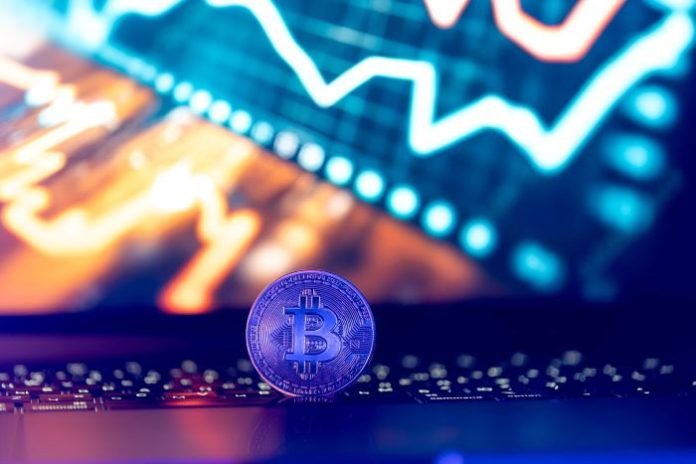For years, trust in the crypto industry hinged on blind faith. Traders sent their coins to centralized exchanges and simply hoped those assets were backed by something real. Then came 2022 – the year that changed everything. With major collapses exposing hidden insolvencies, the demand for transparency skyrocketed. Enter Proof-of-Reserves (PoR) – a concept that has since become the defining benchmark of credibility for any serious trading platform.
Today, exchanges like Kraken vs Coinbase, vs Crypto.com are measured not just by fees or features but by how verifiably solvent they are. In this in-depth breakdown, we’ll explore how Proof-of-Reserves evolved, who’s doing it best, and what this shift means for everyday traders.
Key Takeaways
- Proof-of-Reserves (PoR) allows users to verify if exchanges hold their claimed assets through cryptographic audits.
- The collapse of FTX in 2022 heightened the need for transparency, prompting exchanges like Kraken and Coinbase to adopt PoR.
- Exchanges utilize different methods: Kraken uses Merkle trees, while Coinbase relies on SEC disclosures, and Crypto.com offers on-chain wallet visibility.
- PoR is a critical step towards transparency in the crypto industry, differentiating trustworthy exchanges from the rest.
- As the industry evolves, expect the integration of Proof-of-Liabilities and real-time data to further enhance exchange transparency.
Table of Contents
- What Exactly Is Proof-of-Reserves?
- The Turning Point: FTX and the Transparency Revolution
- Comparing Leading Exchanges by Proof-of-Reserves Commitment
- How Exchanges Actually Perform Proof-of-Reserves
- Beyond Audits: The Future of Exchange Transparency
- Who’s Doing It Right? A Qualitative Breakdown
- Proof-of-Reserves vs. Traditional Finance: The Paradigm Shift
- What Traders Should Look for in a PoR Exchange
- Expert Insights: Proof-of-Reserves as a Competitive Advantage
- The Road Ahead: Proof-of-Reserves 2.0
- Final Thoughts
- FAQs
What Exactly Is Proof-of-Reserves?
Proof-of-Reserves (PoR) is a public, cryptographic verification process that allows users to confirm an exchange truly holds the assets it claims. The method typically involves a Merkle tree audit – a way to mathematically prove balances without exposing sensitive customer data.
Think of it as a digital version of a bank audit that anyone can verify in real-time. The exchange publishes a snapshot of all balances, and users can check their unique identifier within the tree to confirm inclusion. An independent auditor then ensures the published data matches on-chain reserves.
Why It Matters More Than Ever
In traditional finance, banks are regulated, insured, and subject to constant scrutiny. In crypto, none of that oversight exists. Proof-of-Reserves fills that gap by providing a transparent window into solvency. It restores confidence where regulation hasn’t caught up yet.
- For users: It’s a reassurance that your coins exist on-chain.
- For regulators: It signals responsible custody practices.
- For the industry: It’s a self-regulatory tool proving maturity.
The Turning Point: FTX and the Transparency Revolution
When FTX imploded in late 2022, billions of dollars vanished overnight. The event was a harsh reminder that “not your keys, not your coins” still holds true. But it also ignited a new transparency race. Exchanges scrambled to prove they were solvent – not through marketing claims, but through cryptographic audits.
Kraken was one of the first to lead the charge. The exchange had already been publishing PoR audits years before FTX collapsed, setting a precedent for responsible custodianship. Coinbase, though publicly listed and subject to SEC filings, enhanced its disclosures by highlighting cold storage ratios and on-chain verification. Meanwhile, Crypto.com followed suit with on-chain wallet visibility, partnering with Mazars for external audits before shifting to in-house verifications post-2023.
Comparing Leading Exchanges by Proof-of-Reserves Commitment
| Exchange | Audit Frequency | Verification Method | Transparency Score (Qualitative) | Key Highlight |
|---|---|---|---|---|
| Kraken | Biannual | Merkle tree + Independent CPA audits | ⭐⭐⭐⭐⭐ | First major exchange to adopt full user-verifiable PoR |
| Coinbase | Quarterly (via SEC disclosures) | Public filings + On-chain wallet reports | ⭐⭐⭐⭐ | SEC-regulated; highest legal accountability |
| Crypto.com | Quarterly | On-chain address proof + periodic external verification | ⭐⭐⭐⭐ | Expanding visibility via transparency dashboards |
Across the industry, these three exchanges have emerged as the “blue chips” of transparency. While their approaches differ, each aligns with the same goal: proving solvency without compromising privacy.
How Exchanges Actually Perform Proof-of-Reserves
There are two main approaches:
- Cryptographic Audits: Exchanges like Kraken use Merkle trees to allow every user to verify their balances independently. This is considered the gold standard of transparency.
- Public Wallet Disclosures: Platforms such as Crypto.com and Binance show wallet addresses on-chain, letting anyone confirm balances but not liabilities. It’s a good start, but it lacks full accountability without third-party verification.
Coinbase’s approach is unique – rather than publishing wallet trees, it leans on SEC reporting and on-chain proofs to satisfy both regulators and the public. This hybrid transparency model, while less decentralized, is arguably more enforceable legally.
Beyond Audits: The Future of Exchange Transparency
Proof-of-Reserves is only half the story. True transparency requires Proof-of-Liabilities – showing what an exchange owes compared to what it holds. This second half is harder to implement securely, but is rapidly becoming the next frontier. Expect to see hybrid frameworks where independent auditors can verify liabilities using zero-knowledge proofs, protecting privacy while ensuring solvency.
Kraken and Coinbase are already exploring this route, while Crypto.com is testing public dashboards to bridge transparency gaps in real-time. As 2025 unfolds, we’re witnessing the evolution of crypto exchanges into quasi-financial institutions held to near-banking standards.
Who’s Doing It Right? A Qualitative Breakdown
Kraken – The Transparency Pioneer
Kraken’s Proof-of-Reserves program has been operational since 2014. The exchange publishes detailed cryptographic audits and invites users to verify their balances directly. In qualitative terms, Kraken’s transparency and audit integrity are industry-leading. It’s no surprise it consistently ranks among the safest exchanges in our complete round-up of crypto exchanges.
- Pros: Full cryptographic verification, strong privacy, and independent auditors.
- Cons: Limited public dashboard visualization for non-users.
- Best for: Security-conscious traders and institutions.
Coinbase – Regulatory Accountability at Scale
Coinbase takes a different path. As a publicly traded company, it is subject to quarterly SEC filings, audits, and balance disclosures. While it doesn’t offer Merkle tree proofs, the combination of legal oversight and public filings makes it one of the most transparent fiat-to-crypto gateways available.
- Pros: Publicly regulated, strong custody segregation, and audited reserves.
- Cons: Less real-time visibility than cryptographic audits.
- Best for: Retail users and institutions preferring regulatory protection.
Crypto.com – Balancing Innovation and Trust
Crypto.com gained attention for publishing on-chain wallet proofs shortly after the FTX fallout. It later refined its system to blend real-time dashboard transparency with independent reviews. While the exchange doesn’t yet use full Merkle proofs, it’s steadily improving its methodology.
- Pros: Real-time wallet visibility, accessible UX, growing audit partnerships.
- Cons: Partial external verification; not fully open-source.
- Best for: Active mobile traders seeking convenience and transparency.
Proof-of-Reserves vs. Traditional Finance: The Paradigm Shift
In the banking world, users rarely get to verify their bank’s reserves directly. They rely on regulators and deposit insurance. In crypto, the paradigm is reversed. PoR lets the public validate an exchange’s solvency at any time, reducing the need for blind trust.
That’s why Proof-of-Reserves isn’t just an audit feature – it’s the foundation of crypto’s social contract. It ensures exchanges can no longer operate as opaque custodians but must prove solvency in code, not promises.
What Traders Should Look for in a PoR Exchange
Not all Proof-of-Reserves are equal. When evaluating an exchange, ask these questions:
- Is the audit independently verified by a reputable third party?
- Can users individually confirm inclusion in the reserve snapshot?
- Are liabilities also disclosed or proven via cryptographic means?
- Is the audit recurring and timestamped on-chain?
- Does the exchange publish historical audit data?
Exchanges that answer “yes” to most of these are likely adopting a trustworthy model. For example, Kraken ticks nearly every box, while Coinbase relies more on external regulation, and Crypto.com focuses on accessibility and user trust indicators.
Expert Insights: Proof-of-Reserves as a Competitive Advantage
From a market perspective, transparency has become a differentiator. Exchanges that maintain verifiable solvency are attracting higher-value clients and institutional partnerships. Proof-of-Reserves isn’t just a compliance checkbox – it’s a brand asset.
Institutional adoption is following suit. Custody firms, hedge funds, and even stablecoin issuers now demand real-time attestations. In response, blockchain analytics firms like Nansen and Chainalysis are building integrations that display verified exchange reserves publicly. This convergence of transparency and analytics represents a seismic trust upgrade for crypto’s next growth cycle.
The Road Ahead: Proof-of-Reserves 2.0
The next phase of PoR evolution will integrate real-time data and automated audits. Instead of quarterly snapshots, we’ll see live dashboards linked directly to blockchain proofs and liability attestations. Some exchanges are already experimenting with zero-knowledge proof (ZKP) systems that preserve user anonymity while proving aggregate solvency.
Ultimately, the gold standard will be Proof-of-Solvency – combining both assets and liabilities with cryptographic verification. When that day arrives, crypto users will have more visibility into their financial intermediaries than any traditional investor has ever enjoyed.
Final Thoughts
Proof-of-Reserves has shifted crypto from a trust-me culture to a verify-me reality. It’s not just a buzzword; it’s a systemic upgrade in how we evaluate exchanges. Traders who once relied on reputation now demand math, code, and evidence.
Whether you trade on Kraken, Coinbase, or Crypto.com, understanding PoR helps you make informed decisions about where to store and trade assets safely. And as regulatory frameworks tighten worldwide, those who adopt transparency early will lead the next wave of institutional adoption.
Want to explore the most transparent and trusted trading platforms? Check our top recommended crypto exchanges here to see where each platform stands today – or visit Tech IT EZ for other great tips to stay informed across the wider tech landscape.
FAQs
Not entirely. While it’s a major step forward, PoR only verifies assets, not liabilities. The ideal setup includes both, ensuring total solvency transparency.
Leading exchanges now publish quarterly or biannual reports. More advanced models are moving toward continuous, on-chain proof updates.
No, Proof-of-Reserves ensures solvency, not security. Users should still enable two-factor authentication and store long-term holdings in self-custody wallets.
Kraken remains the leader in verifiable audits, with Coinbase and Crypto.com following closely behind through legal and technical transparency models, respectively.
Probably. As regulators adopt crypto-specific frameworks, we expect Proof-of-Reserves or equivalent standards to become required for major custodial platforms.











